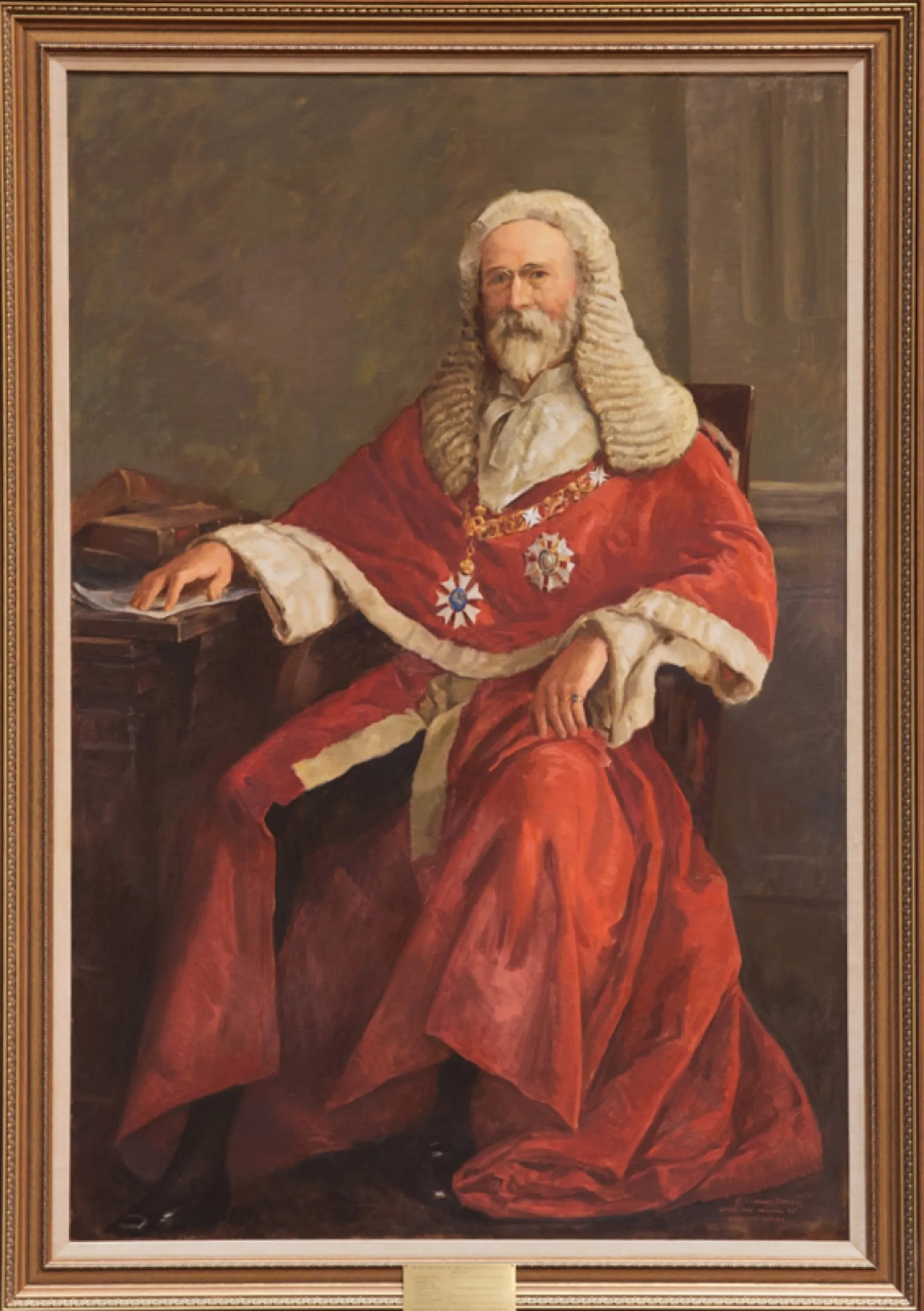This portrait of the inaugural Chief Justice of the High Court of Australia, the Rt Hon Sir Samuel Walker Griffith (1845–1920), is a copy of the original by Godfrey Rivers which hangs in the Supreme Court of Queensland. Sir Samuel Griffith served as Chief Justice of the Supreme Court of Queensland for the decade 1893–1903, and in 1901 was appointed a Privy Counsellor. He served as the first Chief Justice of Australia 1903-19. He had been admitted to the Queensland Bar in 1867 and was appointed a Queen's Counsel (QC) in 1876.
Sir Samuel Griffith had an earlier career in politics and government. He was a Member of Queensland’s Legislative Assembly (1872–93), Premier (1883–88 and 1890–93), Attorney-General (1874–78), Leader of the Opposition (1879–83), Colonial Secretary (1883–86), Colonial Treasurer (1887–88), and Lieutenant Governor (Queensland) (1899–1903). Griffith was appointed a Knight Commander (KCMG) (1886) and awarded a Grand Cross of St Michael and St George (knight) (GCMG) in 1895. Griffith was also a leading figure in the political movement for federation, having proposed and at times presided over the Federal Australasian Council. He defied the early critics of his appointment to the High Court and 'ensured that the Court became recognised as the pre-eminent legal authority in Australia'.
Sir Samuel Griffith also undertook other public roles. He was a member of the University of Sydney Senate 1904–17, was appointed a vice-president of the Royal Colonial Institute in 1909, and became an honorary fellow of the British Academy in 1916. He was awarded honorary doctorates of law by the University of Queensland in 1912 and the University of Wales in 1913
Former Chief Justices (further information)
